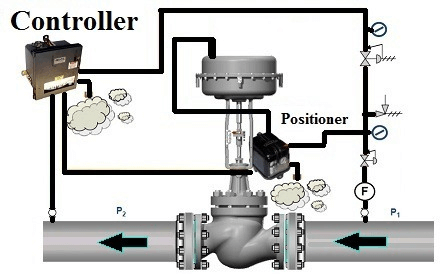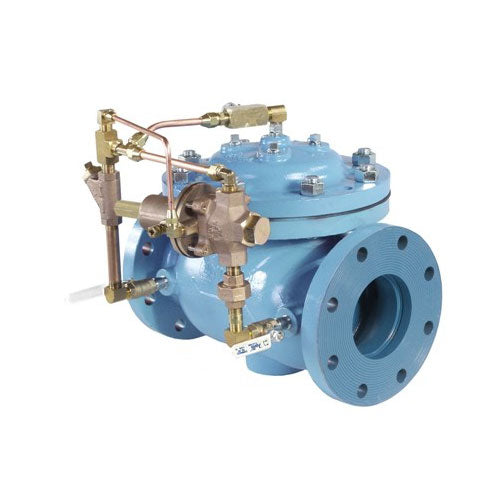How Control Valves Effect Power Efficiency in Industrial Settings
How Control Valves Effect Power Efficiency in Industrial Settings
Blog Article

Maximize Power Savings and Convenience With Advanced Building Automation Controls
In the realm of modern-day design and facility management, the assimilation of advanced building automation regulates stands as a critical innovation. By taking advantage of the power of automation, structures can adapt, react, and develop in methods that were when unbelievable.
Energy Effectiveness Advantages
Energy effectiveness benefits can substantially minimize power usage and functional costs in structures. By implementing energy-efficient techniques and innovations, building proprietors and drivers can accomplish considerable cost savings while likewise contributing to environmental sustainability. Among the primary advantages of boosting energy performance in structures is the reduction of energy bills. Energy-efficient systems, such as innovative structure automation controls, can maximize using sources like home heating, lighting, and air conditioning, causing lower energy costs with time.
In addition, boosted energy performance can prolong the life-span of structure equipment and systems. By operating a lot more efficiently, a/c systems, lighting fixture, and various other structure parts experience much less deterioration, leading to lowered maintenance and replacement expenses. In addition, energy-efficient structures typically command greater residential or commercial property worths and rental prices, providing long-lasting monetary advantages to proprietors.
In addition, energy effectiveness can enhance occupant comfort and performance. Effectively controlled interior atmospheres with optimum lights and thermal problems develop an even more positive and conducive work space, resulting in enhanced staff member complete satisfaction and efficiency. On the whole, the energy performance advantages related to innovative structure automation controls are diverse, including expense savings, environmental stewardship, and passenger wellness.
Boosted Comfort Control
Enhancing convenience control in structure environments requires a sophisticated assimilation of advanced automation systems for ideal owner well-being. By using innovative building automation controls, facilities can customize the indoor atmosphere to satisfy the particular demands and choices of owners. control valves.
Improved comfort control exceeds basic temperature adjustments. It consists of features such as tailored setups, tenancy sensors, and all-natural light utilization to develop a responsive and dynamic setting. By integrating these sophisticated controls, buildings can not just boost convenience however also boost power performance by maximizing system procedures based on real occupancy and usage patterns. Inevitably, focusing on resident convenience through advanced automation systems causes a more enjoyable and much healthier interior setting.
Operational Effectiveness Improvements

Additionally, the application of real-time monitoring and analytics tools makes it possible for building operators to recognize power ineffectiveness and functional abnormalities quickly. By continually keeping an eye on power usage patterns and system efficiency metrics, adjustments can be made in real-time to maximize energy consumption and make certain peak functional performance. control valves. Furthermore, integrating demand feedback strategies right into building automation controls can further boost operational effectiveness by dynamically adjusting energy use based on grid conditions and prices signals
Indoor Environment Optimization
Reliable indoor climate optimization is a fundamental aspect of structure automation controls, making sure residents' comfort and well-being while making best use of energy financial savings. By utilizing innovative sensors and controls, constructing automation systems can continuously keep an eye on and change temperature, humidity degrees, air quality, and air flow to create an ideal indoor environment. Keeping regular and comfy conditions not only boosts resident complete satisfaction however additionally boosts productivity and overall wellness.
Indoor environment optimization also plays a crucial duty in energy effectiveness. By fine-tuning home heating, air flow, and cooling systems based on real-time information and occupancy patterns, constructing automation controls can significantly lower energy intake - control valves. Implementing strategies such as demand-controlled ventilation and thermal zoning can aid lessen energy waste while guaranteeing that each area of the building receives the needed conditioning.

Sustainable Environment Production
Structure automation manages not only maximize interior climate conditions for energy efficiency and resident comfort yet also lay the structure for creating a lasting setting through critical monitoring of systems and resources. By incorporating sophisticated structure automation technologies, such as sensing units, actuators, and smart software, centers can monitor and readjust energy use in real-time to minimize waste and minimize their carbon footprint. These systems make it possible for predictive upkeep, recognizing potential concerns prior to they escalate and enhancing devices efficiency to enhance longevity and effectiveness.
Furthermore, lasting atmosphere development expands beyond power monitoring to include water conservation, waste decrease, and interior air top quality renovation. Structure automation controls can manage water usage, discover leakages, and ensure proper garbage disposal methods, over here adding to total sustainability efforts. Furthermore, by managing and monitoring ventilation and filtration systems, these modern technologies boost occupant health and performance while lowering power intake connected with heating and cooling operations.
Conclusion
In verdict, progressed structure automation controls offer considerable advantages in regards to energy savings, comfort control, functional efficiency, interior climate optimization, and producing a lasting setting. By carrying out these controls, structures can accomplish optimal efficiency while minimizing energy usage and improving resident convenience. It appears that the use of sophisticated automation modern technology is critical in improving building performance and developing an extra sustainable future.
Power performance advantages can substantially decrease power consumption and functional expenses in buildings. Generally, the power efficiency advantages linked with sophisticated structure automation controls are multifaceted, incorporating expense savings, ecological stewardship, and owner well-being.
Furthermore, incorporating need reaction methods into structure automation controls can even more enhance functional efficiency by dynamically adjusting energy use based on grid conditions and prices signals.
Building automation controls not just enhance interior climate problems for energy performance and passenger comfort however also lay the structure for official statement producing a lasting environment with tactical monitoring of systems and sources.In final thought, advanced structure automation controls offer substantial advantages in terms of energy savings, convenience control, operational performance, indoor climate optimization, and creating a sustainable environment.
Report this page